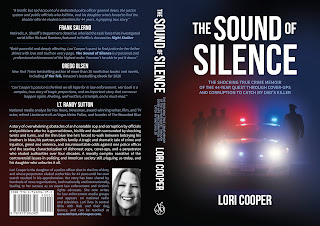HOW WE CHOOSE THE PERFECT ENDING FOR OUR STORY - BY LORI COOPER
HOW WE CHOOSE THE PERFECT ENDING FOR OUR STORY
1. Everyone is different! What works for me might not work for you.
2. I HAVE NO IDEA WHAT I'M SEEMINGLY DOING.
That means I need to sit down and figure out my process.
Fortunately, I am in the middle of rewriting an ending that didn't seem to be captivating enough, or, again, deliver on my promise of what my readers should expect. So, analyzing methods couldn’t have come at a more convenient time.
An Anecdote on Messing Up (we all do it!)
See, I decided to completely gut the last 1/3 of my book. Yep. You read that right. About 40k words on the last chunk of the book.
After evaluating the plot and setting with regard to my writing, I didn't think it was too bad. But the character arc and dialogue definitely needed help.
For those of you who are writers, you know how much crafting the most incredible writing experience in endings can mean. I LOVE endings. The momentum of drafting the most creative and true-to-form ending hits its stride right before the climax, and suddenly, I’ll just SEE how all the plot threads and character arcs are going to gel together.
To really determine that this ending lacked a HUGE component of emotional resolution and power meant I was crushed and very angry with myself for not seeing so until the last moment.
But part of being a writer is always striving to make the best book you can. Right? So I hunkered at my computer and realized that simply addressing comments scene-by-scene wasn’t going to cut it.
It turns out that in the course of writing the book, I had lost touch with my characters. But I muddled onward anyway, working toward finishing the book, continuously revising it thoroughly. It all worked on a plot level, but the story, I realized, could be told on so much more of a deeper level, with so much more emotion than I'd shared.
But since I’d lost touch with the characters, I needed to go all the way back to the beginning of the book. Then, I needed to separate out each point-of-view (POV), of which there are 3, and then I needed to reacquaint myself with each character and make sure all of their dominoes were falling in the simplest, most logical way. More importantly, I needed to ensure those dominoes toppled and fell toward an ending of sheer awesomeness.
Look at Your Dominoes
I once heard someone compare the scenes in a book to dominoes–our inciting incident sets off the domino chain, and each scene is a direct result of the scene before, but the dominoes don’t represent specific events so much as our protagonist’s emotional journeys through the events do, with the dominoes also representing how events shape/affect the primary goal.
Each new scene will show our character reacting in some way to what happened before.
I didn’t have a handle on my dominoes anymore. Character reactions were falling flat, characters were acting out of character, and there was no emotional resonance at the book’s close.
But when I went back to the beginning, separated out each POV, and looked at individual dominoes, I was able to see how things should’ve fallen. I was able to rediscover the 3 POV’s voices and make sure that each step they took was a direct result of what they’d done/felt in the previous scene.
Then I rewrote the ending. Yep—new dialogue, new setting backdrops, new trajectory, and new choices. And AHHHHH, it felt good. The words poured without as much difficulty!
SO, all of that anecdote was to simply show you what I mean when I say: look at your dominoes before you write an ending. Look at the plot events—see how each domino hits the next until the climax. What event would need to come next based on all that has come before?
More importantly, make sure that your characters’ emotional dominoes fall in a logical, ever-growing way. Characters change, right? They start out one way, and by the end of the book, they’re someone new (and hopefully someone better, too). When the character reaches their “new self,” if all the emotions have been leading up to that, then your story will SING.
It’s just like watching a super-satisfying domino display—it all fell where it was supposed to fall, even if we couldn’t quite see that ending from the beginning.
You tell me: how do YOU write endings that sing?



Comments
Post a Comment